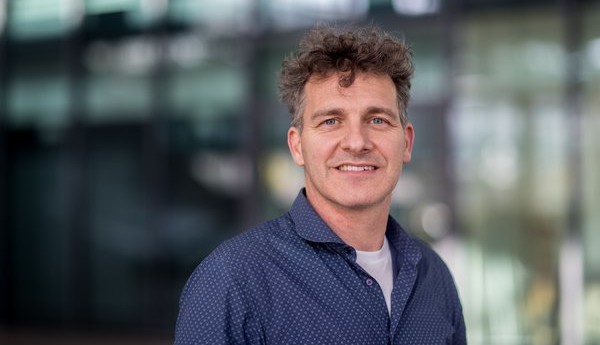Teleportation of Majorana Particles?
April 09, 2019
on
on

Erik Bakkers, professor of Advanced Nanomaterials & Devices at the TU Eindhoven, researches a new nano material. With this he hopes to be able to demonstrate the teleportation of Majorana particles conclusively. This is an essential step towards the construction of a Majorana quantum computer. Bakkers received an Advanced Grant of 2.5 million euros from the European Research Council (ERC) to carry out this research.
Bakkers: “These results are extremely important, but also showed us that the current combination of semiconductor (indium antimonide) and superconductor (aluminium) is not ideal for the next step in Majorana research”. The transition between these two materials is not very sharp, because the aluminium reacts chemically with the indium antimonide. In addition, high magnetic fields are required to reach the required topological state, which is very difficult. The topology is intended to protect the Majorana particle so that it is much more stable than other quantum states.
Bakkers: “For example, if I change the electric field on one side, the particle on the other side must simultaneously show the same change”. Quantum teleportation forms the basis of the qubit, the building element of the Majorana quantum computer. “That application is on the distant horizon”, says Bakkers.
Source: TU Eindhoven
Quantum chip
The award to Erik Bakkers builds on an earlier ERC Consolidator Grant from 2013, that in 2017 culminated in an advanced quantum chip with nano-hashtags, with which in 2018 the long-expected zero-bias peak was demonstrated with the exact same height as predicted by the Majorana theory.Bakkers: “These results are extremely important, but also showed us that the current combination of semiconductor (indium antimonide) and superconductor (aluminium) is not ideal for the next step in Majorana research”. The transition between these two materials is not very sharp, because the aluminium reacts chemically with the indium antimonide. In addition, high magnetic fields are required to reach the required topological state, which is very difficult. The topology is intended to protect the Majorana particle so that it is much more stable than other quantum states.
Robust crystal lattice
Using the Advanced Grant, Bakkers would therefore like to develop a new material combination: topological crystalline insulator nano wires of tin telluride coupled to a superconducting layer of lead. This material is naturally in a topological state that is formed by the symmetry of the crystal lattice. Because this crystal lattice of this material is very simple (the same as that of table salt), everything is much more robust. Furthermore, lead is a better superconductor than aluminium; this combination should make it easier to find Majorana states and manipulate them.Growth process
Bakkers will start the research, that falls within the Center for Quantum Materials and Technology Eindhoven (QT/e), that was launched last year, by growing high-quality tin-telluride nano wires. For this growth process he want to use a strategy that has never been used for these materials: a high-vacuum technique (Molecular Beam Epitaxy), which should result in an extremely pure material.Teleportation of properties
“The results from the earlier ERC study already gave strong indications of the presence of Majorana particles. But in order to really demonstrate their presence, two things have to be proven: teleportation and interdependence. Using this Advanced Grant I want to prove teleportation”, says Bakkers. This requires an entangled pair of particles to appear on both sides of the nano wire and these states must be couped.Bakkers: “For example, if I change the electric field on one side, the particle on the other side must simultaneously show the same change”. Quantum teleportation forms the basis of the qubit, the building element of the Majorana quantum computer. “That application is on the distant horizon”, says Bakkers.
Source: TU Eindhoven
Read full article
Hide full article


Discussion (0 comments)